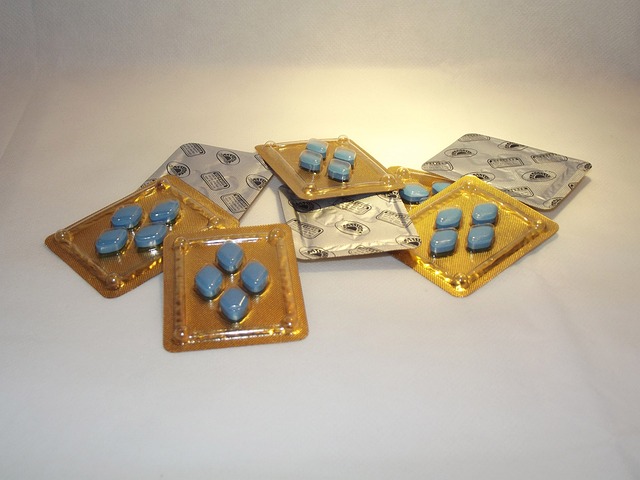A Comprehensive Guide to Pharma Packaging and Labeling
Pharmacy packaging and labeling ensure product safety, compliance, and traceability. Key elements include tamper-evident seals, clear dosage information, and batch tracking. These standards protect patients while supporting supply chain transparency.

The pharmaceutical packaging and labeling sector represents one of the most strictly regulated components of the drug manufacturing process. Far beyond simple containment, pharmaceutical packaging serves multiple crucial functions: protecting medications from environmental factors, providing essential information to healthcare professionals and patients, and ensuring product integrity from manufacturing through consumption. As regulatory requirements continue to evolve globally, understanding the fundamentals of pharma packaging and labeling has become increasingly important for professionals working in pharmaceutical environments.
Understanding Pharmaceutical Packaging Requirements
Pharmaceutical packaging must meet stringent standards to ensure medication safety and efficacy. Primary packaging—components that directly contact the medication—must be chemically inert to prevent interactions with the drug substance. Materials like glass, various polymers, and certain metals are carefully selected based on the medication’s physical and chemical properties. Secondary packaging provides additional protection and information, while tertiary packaging facilitates transportation and storage. Each packaging level must adhere to specific regulatory requirements regarding material quality, sterility maintenance, and barrier properties against moisture, light, oxygen, and microbial contamination.
Regulatory Framework for Pharma Labeling
Pharmaceutical labeling operates under comprehensive regulatory frameworks that vary by region but share common objectives. In the United States, the FDA’s labeling requirements include mandatory elements such as the product name, dosage form, active ingredients, manufacturer information, and specific warnings. The European Medicines Agency (EMA) enforces similar requirements through Directive 2001/83/EC with additional provisions for multilingual packaging. Both agencies require machine-readable elements like barcodes or QR codes to support traceability and authentication. These regulations continuously evolve to address emerging concerns such as counterfeiting and to improve patient comprehension of medication information.
Child-Resistant and Senior-Friendly Packaging Solutions
The pharmaceutical industry faces the dual challenge of creating packaging that prevents access by children while remaining accessible to elderly patients. Child-resistant packaging typically employs mechanisms requiring coordination or strength beyond young children’s capabilities, such as push-and-turn caps or blister packs with peel-back layers. However, these same features can create accessibility barriers for seniors or individuals with dexterity limitations. The concept of “senior-friendly” design has led to innovations like easy-grip bottles, lever-based opening systems, and packaging with enhanced visual elements. Manufacturers must demonstrate compliance with standards like the US CPSC protocols or ISO 8317 through standardized testing procedures.
Anti-Counterfeiting Technologies in Pharmaceutical Packaging
Pharmaceutical counterfeiting represents a significant global health threat, with the WHO estimating that up to 10% of medications worldwide may be counterfeit. Modern anti-counterfeiting measures employ multiple security layers, from overt features like holograms and color-shifting inks to covert elements detectable only with specialized equipment. Track-and-trace systems using serialization assign unique identifiers to each package, enabling verification throughout the supply chain. Digital authentication technologies like RFID tags, blockchain verification, and smartphone-scannable authentication codes provide additional security. These technologies not only protect patients but also help manufacturers protect their intellectual property and brand reputation.
Sustainable Practices in Pharmaceutical Packaging
The pharmaceutical industry is increasingly adopting sustainable packaging approaches in response to environmental concerns and regulatory pressures. Biodegradable materials derived from plant starches, cellulose, and other renewable sources are replacing traditional plastics in appropriate applications. Package redesign efforts focus on material reduction through lighter-weight containers and minimized secondary packaging. Recyclability considerations include using mono-material components that simplify the recycling process. Several major pharmaceutical companies have established sustainability targets, including commitments to achieve 100% recyclable or reusable packaging by specific dates and reducing overall packaging volume while maintaining product protection and compliance with regulations.
Cost Considerations in Pharmaceutical Packaging Systems
Pharmaceutical packaging represents a significant portion of overall product costs, with implications throughout the supply chain. Initial material and production expenses vary widely based on complexity, with specialized packaging like prefilled syringes or temperature-controlled containers commanding premium prices. Long-term cost considerations include stability testing, regulatory compliance documentation, and potential recall expenses associated with packaging failures.
| Packaging Type | Approximate Cost Range | Key Considerations |
|---|---|---|
| Blister Packs | $0.05-0.25 per unit | Moisture barrier properties, child resistance features |
| Glass Vials | $0.30-2.00 per unit | Type of glass, coating requirements, stopper compatibility |
| Prefilled Syringes | $1.00-4.00 per unit | Material compatibility, sterilization method, auto-injector integration |
| Temperature-Controlled | $5.00-50.00 per shipment | Duration of protection, temperature range, monitoring capabilities |
| Smart Packaging | Additional $0.10-5.00 per unit | Sensor type, data capabilities, integration requirements |
Prices, rates, or cost estimates mentioned in this article are based on the latest available information but may change over time. Independent research is advised before making financial decisions.
Future Trends in Pharmaceutical Packaging and Labeling
The pharmaceutical packaging landscape continues to evolve with technological advancements and changing patient needs. Smart packaging incorporating sensors that monitor medication conditions and usage is gaining traction, with technologies that can track temperature exposure or remind patients about dosing schedules. Electronic labeling solutions are expanding, with augmented reality applications that provide additional information when packaging is scanned with a smartphone. Personalized packaging for precision medicine is emerging as treatments become more tailored to individual genetic profiles. These innovations aim to enhance medication adherence, improve patient education, and ensure product integrity while addressing the industry’s ongoing challenges of security, compliance, and sustainability.
The complex world of pharmaceutical packaging and labeling continues to evolve in response to regulatory requirements, technological capabilities, and patient needs. As the industry advances, the fundamental goals remain consistent: protecting product integrity, ensuring patient safety, and providing clear, accurate information. Professionals working in this field must stay informed about emerging technologies and changing regulations while maintaining focus on these essential objectives that directly impact public health and safety.




